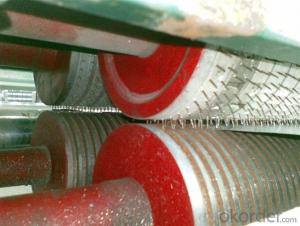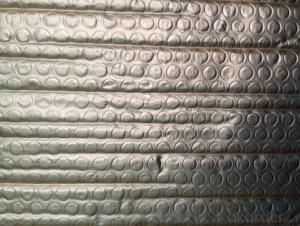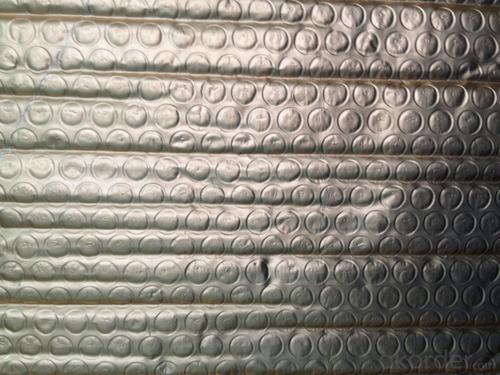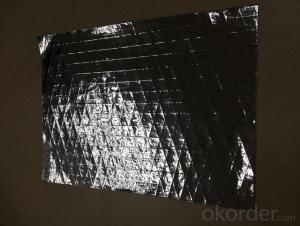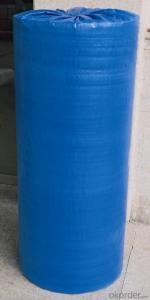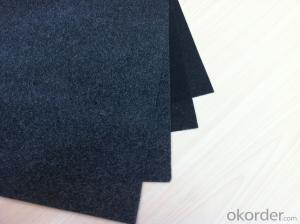Flexible Ducts Bubble Foil Green Insulation with Fiberglass Facing
- Loading Port:
- China Main Port
- Payment Terms:
- TT OR LC
- Min Order Qty:
- -
- Supply Capability:
- -
OKorder Service Pledge
OKorder Financial Service
You Might Also Like
Application:
1,Building Thermal Insulation Material
(1),Roof,Underlay,Under Concrete & floor Insulation;
(2),Attic,Crawl Space,Stud Wall ,Metal Frame Building Insulation.
2,Wrapping
(1),Protective coatings of ventilating pipe,HVAC Duct & Pipe;
(2),Shells of air conditioner and water heater.
Feature:
1), Waterproof, heavy duty, clean, light, flexible, non-absorbent surface
2), Fire resistant & antiglare
3), Recyclable, environmentally friendly
4), Effective in extreme temperatures both hot and cold
5), Easily install, cut, stapled, nailed or glued into place
6), Safe to handle with no special clothing or breathing Equipment
Feature:
1), Waterproof, heavy duty, clean, light, flexible, non-absorbent surface
2), Fire resistant & antiglare
3), Recyclable, environmentally friendly
4), Effective in extreme temperatures both hot and cold
5), Easily install, cut, stapled, nailed or glued into place
6), Safe to handle with no special clothing or breathing Equipment








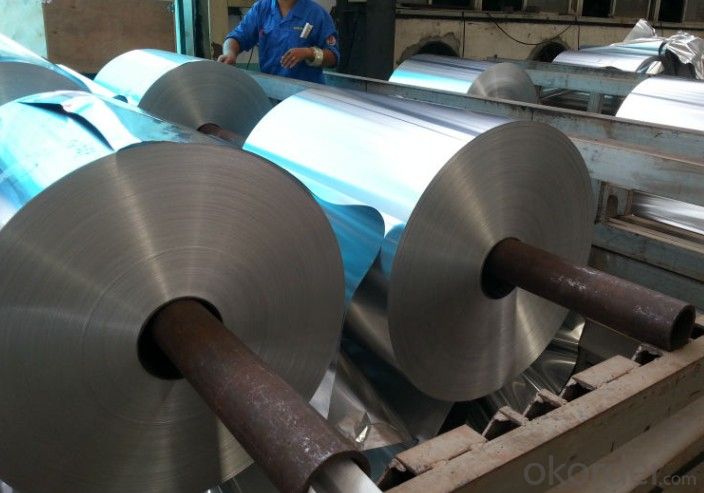

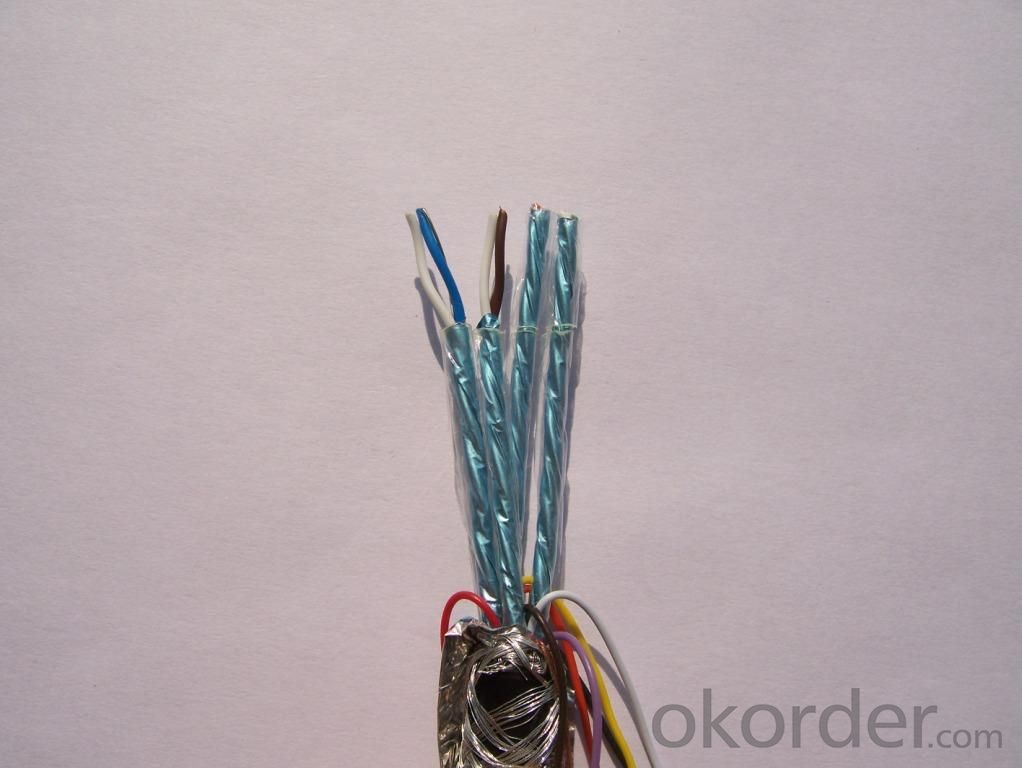

- Q: Is it possible to utilize black fiberglass tissue for cleaning hard surfaces?
- <p>Yes, black fiberglass tissue can be used as a cleaning tool for hard surfaces. It is known for its durability and abrasive properties, which make it effective in removing dirt, grime, and even rust. However, it's important to use it with caution as it can scratch softer surfaces. Always test a small, inconspicuous area first to ensure it doesn't damage the surface.</p>
- Q: This question asks for a comparison between black fiberglass tissue and other types of paper products, focusing on their characteristics and uses.
- <p>Black fiberglass tissue is distinct from other paper products due to its composition and properties. Unlike traditional paper made from cellulose fibers, black fiberglass tissue is made from fine glass fibers, which are coated with a resin and then dyed black. This material is known for its high strength, durability, and resistance to heat and chemicals. It's often used in applications requiring these specific properties, such as in electrical insulation, high-temperature filtration, and as a reinforcement material. In contrast, other paper products like standard printing paper, tissue paper, or cardboard are made from wood pulp and are not designed for such specialized uses. They are more suited for everyday uses like writing, packaging, and hygiene.</p>
- Q: This question asks for a comparison of different types of black fiberglass tissues, focusing on their unique characteristics and applications.
- <p>Black fiberglass tissues, also known as black glass fabrics, can vary based on their weave patterns, fiber types, and treatment processes. Some common types include plain weave, twill weave, and satin weave, each offering different strengths and flexibility. The fiber itself can be E-glass, S-glass, or other types, impacting the fabric's strength and heat resistance. Surface treatments like resin or silicone can affect the fabric's surface properties, making it more suitable for specific applications such as electrical insulation, thermal protection, or reinforcement in composite materials. Each type is chosen based on the required mechanical properties, chemical resistance, and environmental conditions it will face.</p>
- Q: What does the texture of black fiberglass tissue feel like?
- <p>The texture of black fiberglass tissue is typically rough and fibrous. It is made from thin strands of glass that are woven together, giving it a somewhat similar feel to a coarse fabric or a very fine mesh. The surface is often uneven and can be scratchy to the touch. It is known for its strength and durability, which is why it is used in various applications such as insulation, reinforcement, and construction materials.</p>
- Q: Does fiberglass facing help with soundproofing?
- Fiberglass facing is capable of aiding in soundproofing. Fiberglass possesses remarkable sound-absorbing capabilities, effectively capturing and diminishing sound waves. By utilizing fiberglass as a facing material, the soundproofing attributes of a wall or ceiling can be enhanced, minimizing noise transmission. The facing functions as a barrier, effectively preventing sound from traversing through, rendering it an efficient solution for reducing noise pollution in diverse environments, including residences, workplaces, studios, and industrial settings. Moreover, fiberglass is lightweight, simple to install, and can be effortlessly combined with other soundproofing materials to achieve superior outcomes.
- Q: Is it possible to use black glass fiber cloth as a material for soundproofing walls?
- <p>Yes, black glass fiber cloth can be used for soundproofing walls. It is a popular material due to its durability and sound absorption properties. The fibers in the cloth can help to dampen sound waves, reducing noise transmission. However, it's important to note that while it can reduce noise, it may not completely eliminate it. For optimal soundproofing, it's often used in combination with other materials such as mass loaded vinyl or acoustic foam to create a more effective barrier. Additionally, it's crucial to ensure proper installation and sealing to prevent sound from leaking through gaps or cracks.</p>
- Q: This question asks for a comparison between black fiberglass tissue and cotton tissues regarding their performance and cost-effectiveness.
- <p>Black fiberglass tissue and cotton tissues have distinct differences in performance and cost. Black fiberglass tissue, known for its strength and durability, is often used in industrial applications where heat resistance and chemical resistance are required. It is non-absorbent and does not rot, making it suitable for outdoor and harsh environments. However, it is generally more expensive than cotton due to its specialized manufacturing process. Cotton tissues, on the other hand, are soft, absorbent, and biodegradable, making them ideal for personal care and domestic use. They are more cost-effective and widely available but lack the durability and heat resistance of fiberglass tissues. Overall, the choice between black fiberglass and cotton tissues depends on the specific application and budget considerations.</p>
- Q: What is the tensile strength of black fiberglass paper, measured in terms of force per unit area?
- <p>The tensile strength of black fiberglass paper can vary depending on the specific type and manufacturer. Generally, it is known to have a tensile strength ranging from 100 to 200 MPa (megapascals). This high tensile strength makes it suitable for applications requiring durability and resistance to tearing, such as in electrical insulation and reinforcement in composite materials. It's important to check the specific product specifications for precise tensile strength values.</p>
- Q: Is it possible to recycle black fiberglass tissue without utilizing any special tools or techniques?
- <p>Recycling black fiberglass tissue without special equipment or methods is challenging. Fiberglass, especially when colored, can be difficult to recycle due to the presence of resins and pigments that complicate the recycling process. Traditional methods often involve shredding and separation, which require specific machinery. Moreover, the black color can make it less desirable for recycling as it's harder to incorporate into new products. While some recycling facilities may accept fiberglass, it's essential to check with local recycling centers for their specific guidelines and capabilities.</p>
- Q: Is it possible to substitute traditional home insulation materials with black fiberglass tissue?
- <p>Yes, black fiberglass tissue can be used as an alternative to traditional insulation materials in your home. It provides thermal insulation, which helps in reducing heat transfer and can improve energy efficiency. However, it's important to consider the specific properties of black fiberglass, such as its resistance to heat and its impact on indoor air quality. It's also crucial to ensure that it is installed correctly to achieve optimal performance. Always consult with a professional to determine if black fiberglass is the best choice for your insulation needs and to follow safety guidelines during installation.</p>
Send your message to us
Flexible Ducts Bubble Foil Green Insulation with Fiberglass Facing
- Loading Port:
- China Main Port
- Payment Terms:
- TT OR LC
- Min Order Qty:
- -
- Supply Capability:
- -
OKorder Service Pledge
OKorder Financial Service
Similar products
Hot products
Hot Searches
Related keywords
